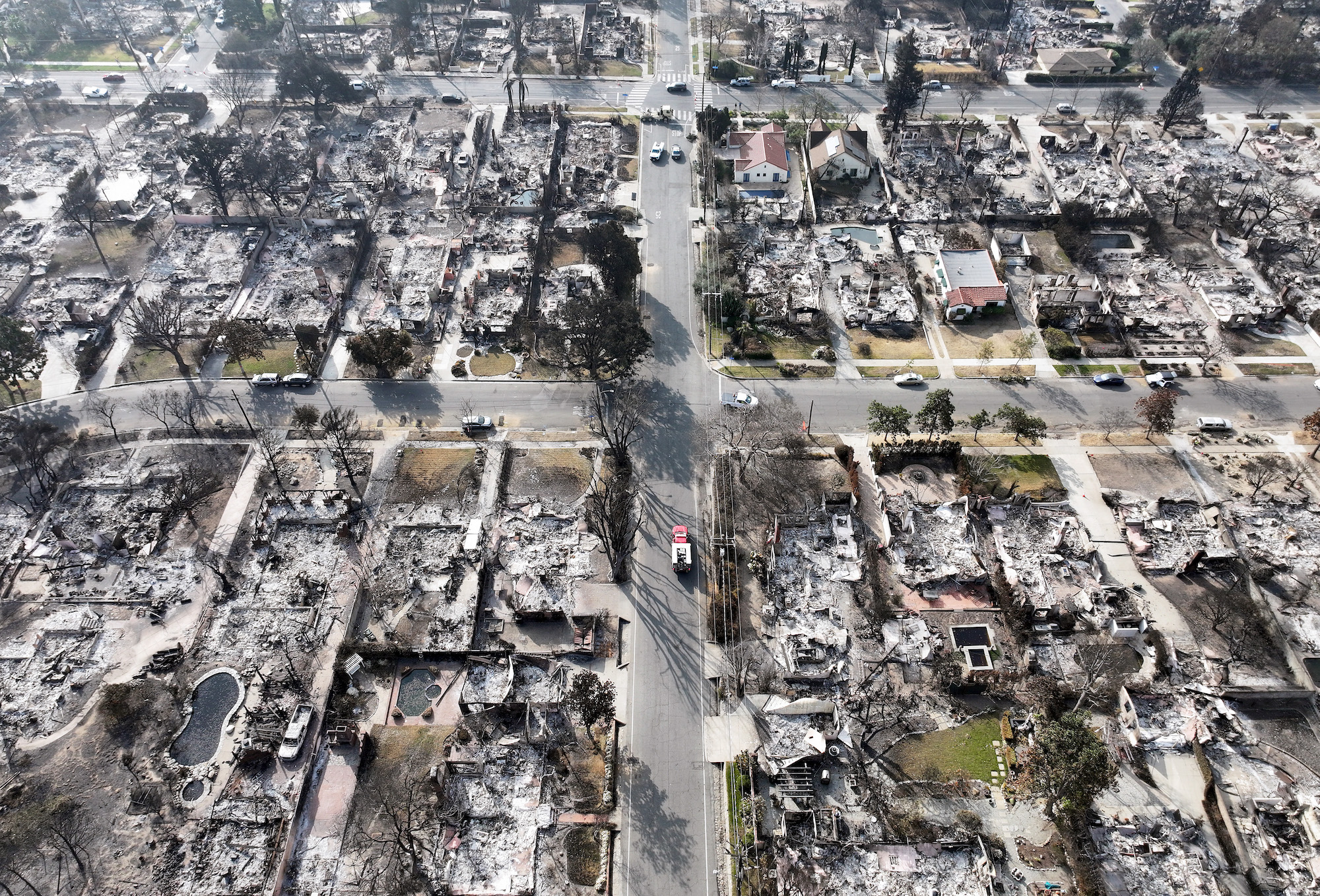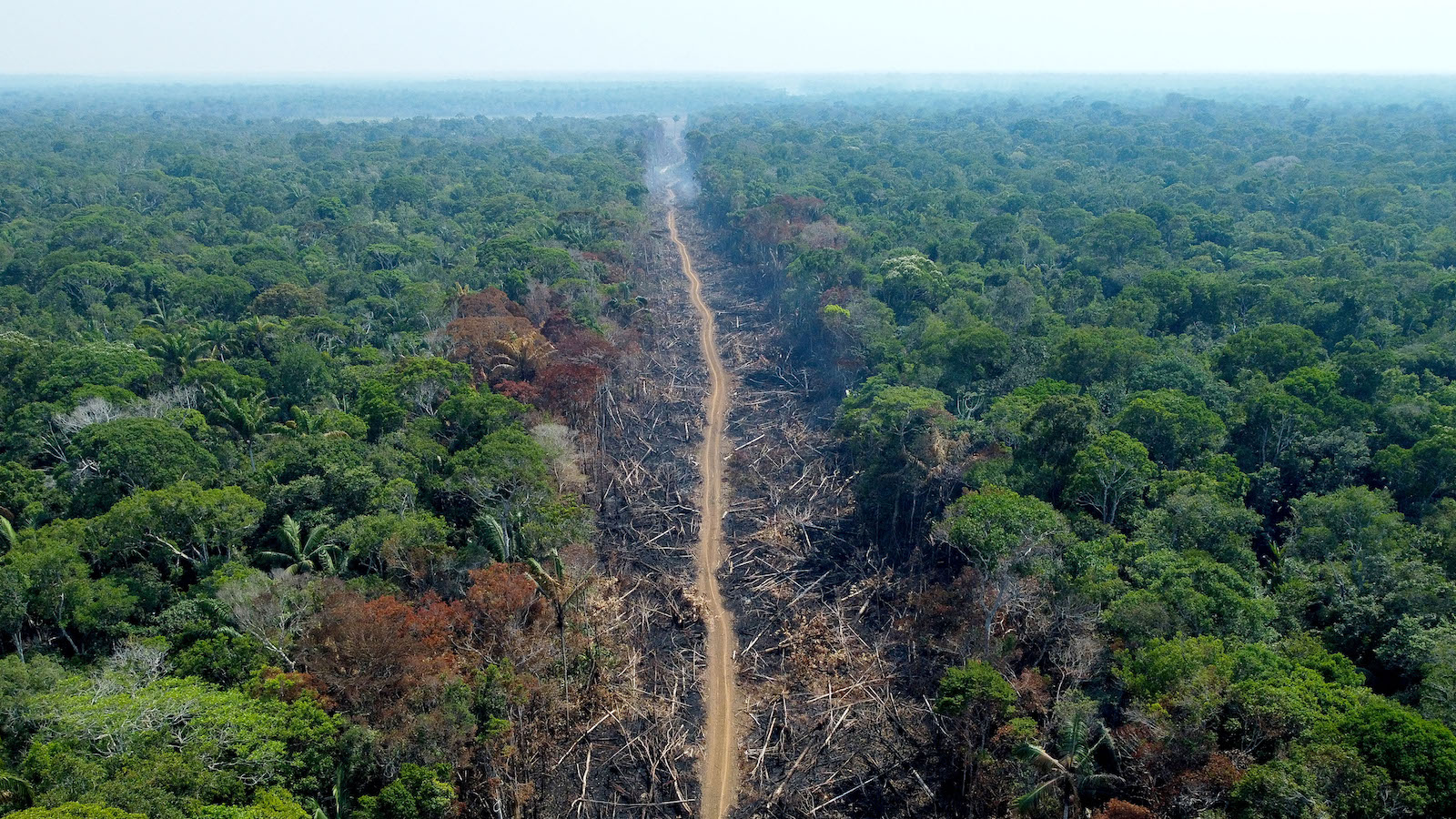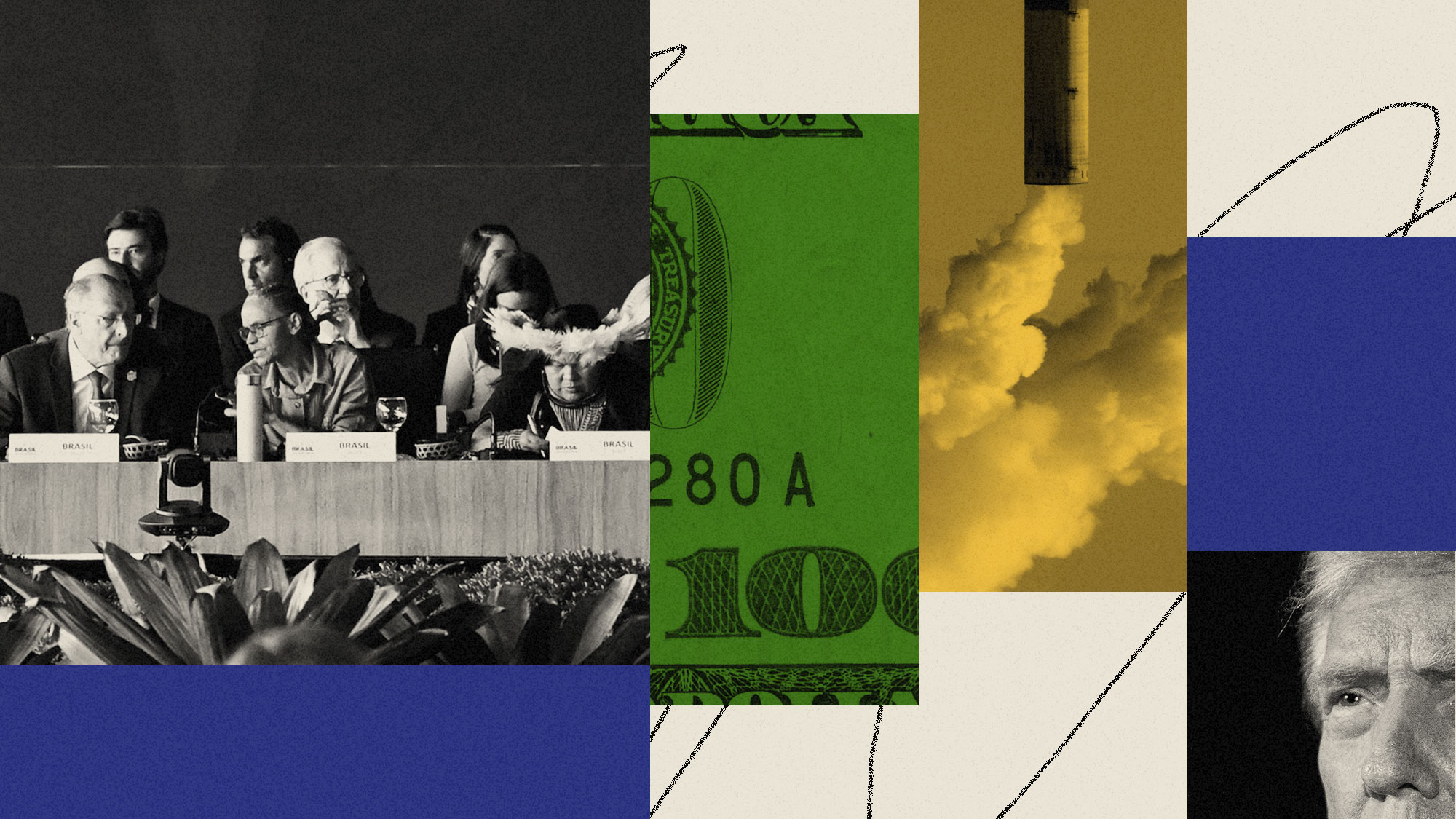Global leaders will gather in northern Brazil next week to begin the 30th annual Conference of the Parties, or COP30, the United Nations climate summit that takes stock of just how much the world’s nations are doing to address climate change — or, depending on your capacity for optimism, how little.
As U.S. President Donald Trump refutes the legitimacy of global warming — he recently called it the world’s “greatest con job” — his international counterparts are preparing to negotiate the terms of adapting their nations to its consequences. Meanwhile, poor and developing countries, which have contributed comparatively few emissions to the global carbon ledger, have yet to receive the climate-related aid long promised to them by rich and developed countries. This stymies their preparation for the effects of a crisis they did little to cause.
Secure · Tax deductible · Takes 45 Seconds
Secure · Tax deductible · Takes 45 Seconds
The politicking to come in Belém will take place against a bleak backdrop: It’s been 10 years since the ratification of the Paris Agreement, the international treaty that aims to keep global warming “well below” 2 degrees Celsius, or 3.6 degrees Fahrenheit, compared to pre-industrial levels. Roughly 100 countries have failed to strengthen their climate pledges since last year’s conference, despite the fact that those commitments were widely recognized at the time as too weak to match the ambition of the Paris accords. The U.S., the world’s second-largest emitter of greenhouse gases, is not sending any high-level administration officials to the conference.
The commitments on the books as they stand put the world on track for 2.3 to 2.5 degrees C of warming by 2100. It’s easy to feel like “the entire Paris Agreement experiment is being challenged,” Manish Bapna, president of the Natural Resources Defense Council, said at a press conference last week. Still, he said, there’s reason for optimism: Renewable energy sources, led by solar, outpowered coal for the first time in history in the first six months of 2025.
Brazil, a country with a real climate agenda, is taking the reins of the so-called COP presidency this year, making it a kind of master of ceremonies. It wasn’t so long ago that Brazil had no climate ambitions to speak of: Under former right wing president Jair Bolsonaro, deforestation in the Brazilian Amazon, one of the world’s largest carbon reserves, reached record heights. Bolsonaro was recently sentenced to 27 years in prison for organizing a coup against his successor, Luiz Inácio Lula da Silva. Lula, by comparison, has promised to put a stop to deforestation in Brazil by the end of the decade. He’s been successful so far; Brazil’s emissions fell nearly 17 percent last year, the biggest dip in 15 years, as his government cracked down on illegal deforestation.
But Lula also gave an oil company permission to drill an exploratory well near the mouth of the Amazon River last month, a development that dismayed environmentalists. Lula says fossil fuel extraction can supply the funds Brazil needs to make good on its climate commitments. While critics have been quick to say that fighting deforestation with one hand and approving new drilling licenses with the other is disingenuous, Lula doesn’t see it that way. He may have a point, as it’s becoming increasingly clear that the money for Brazil’s green transition isn’t coming from anywhere else. Developing countries across the world are coming to similar conclusions, as inflation, tariff wars, and rising isolationism cause rich nations in North America and Europe to turn inward. Meanwhile, China, the world’s largest exporter, is flooding developing countries with cheap solar panels, greasing the wheels of a clean energy transition that seemed out of reach even a couple of years ago.

Pablo PORCIUNCULA / AFP / Getty Images
“The time has come to move from negotiation to implementation,” Lula said in New York City in September. Other presidents have made similarly hopeful statements in years past. Will this COP be the “COP of truth” that Lula has called for?
Here are five developments that will determine its success.
A reckoning with the sorry state of climate finance
The Paris Agreement, adopted by 195 nations in 2015, included specific clauses aimed at drumming up financial support from rich countries for climate mitigation and adaptation around the world, with the aim of generating $100 billion per year by 2020, a sum widely panned as grossly insufficient relative to the needs of the world’s poorer countries. Nevertheless, developed nations struggled to meet that goal on time. The belated funding has major issues, namely that much of it has been given in the form of high-interest loans, rather than grants, putting further strain on countries already struggling with debt. Adding insult to injury is the fact that some of that money is existing aid repackaged as new climate financing.
To make matters more complicated, the U.N.’s “green climate fund,” one of the main channels through which this money is supposed to flow to developing nations, has been slow to approve countries to apply for funds, critics say. They also argue that the fund is overweighting projects focused on reducing emissions rather than initiatives that will help countries manage the consequences of climate change that are already happening.
In short, the system needs reform. At COP29 in Baku, Azerbaijan, nations began the reform process by setting a new $300 billion per year minimum floor for climate finance to developing countries by 2035, with a broader target of mobilizing $1.3 trillion per year across a variety of different funding mechanisms, including public and private banks. This year’s conference is required to take up that goal again and find new ways to make it happen. The overarching aim is to help developing countries simultaneously move away from fossil fuels and prepare for the effects of climate change. The updated “Baku to Belém road map,” published Wednesday, says carbon pricing, taxes on aviation, luxury fashion, and military goods, and minimum corporate taxes, among other measures, can help close the funding gap.
“Climate impacts are being felt by society,” the U.N. report’s authors, a group of economists, wrote, “but the benefits of solutions to the climate crises are not trickling down to the poor and vulnerable.”
A contentious plan to adapt to a warming world
The Paris Agreement established a framework aimed at making nations less vulnerable to climate impacts such as hurricanes, sea level rise, and wildfires. This “global goal on adaptation” is becoming increasingly important as countries realize how exposed they are to changing environmental conditions. The problem is that they don’t have a shared language for measuring their progress toward achieving that goal.
At COP30, negotiators are expected to finally settle on a list of 100 “indicators” chosen from a pool of nearly 10,000 by a team of overworked experts working under deadline. These indicators will help track the resilience of countries’ water supply and sanitation systems, ecosystems and biodiversity, health services, and other social and physical infrastructure. Once implemented, countries will be able to assess just how much work still needs to be done to achieve true climate resilience.

Mario Tama / Getty Imagess
Parties will issue a final decision on this list of indicators at COP30, which will be its own battle since even small changes in wording can have vast implications for how the indicators are implemented on the ground. Then the real work begins: finding money to finance all of the adaptation measures countries will need to implement. The U.N. Environment Programme’s Adaptation Gap Report 2025 estimates that the global adaptation finance gap, the delta between what’s needed for developing countries to adapt to climate change and what’s actually being mobilized, is in the ballpark of $284 billion and $339 billion per year. The majority of multilateral climate financing — 64 percent — is dedicated to mitigation, with just 19 percent directed at adaptation and 17 percent aimed at both pools. Those proportions, experts say, need to change.
Backsliding on anti-fossil fuel commitments
Two years ago, at COP28 in Dubai, countries made a historic pledge to “transition away from fossil fuels” within this decade. It marked the first time that a COP decision text explicitly acknowledged the need to move away from the use of fossil fuels, and while the language didn’t go so far as to suggest a total “phaseout” of fossil fuels, it was nonetheless seen as a victory for environmental campaigners.
But opposition to the language emerged almost immediately after the so-called UAE consensus had been inked. At the Baku summit the following year, countries failed to explicitly reiterate the commitment, prompting fears that negotiators were “backsliding” from the stronger Dubai language. This year, with the United States’ retreating from key climate commitments and pressuring others to do the same, advocates are worried the progress at COP28 could further unravel.
“We are already seeing signs that some governments and oil-producing nations are seeking to dilute, delay, or reinterpret” the commitment to move away from the use of fossil fuels, said Harjeet Singh, a climate activist and founding director of Satat Sampada Climate Foundation in India.
The Brazilian COP presidency, for its part, is trying to sidestep the conversation altogether, announcing that there will not be a so-called cover decision — the main decision text that telecasts the conference’s political outcomes — this year. Some countries have been advocating for a cover decision in the last few weeks, although it’s unclear what their motivations are. It remains to be seen whether Brazil will bow to the pressure.
A fight for the rights of Indigenous peoples
Belém is the first-ever COP to be held in the Amazon, the world’s largest tropical rainforest that’s home to 1.5 million Indigenous people and a fifth of all freshwater on Earth. Indigenous peoples often find themselves excluded at COP, where state government representatives with U.N. membership hold decision-making power and leaders of tribal nations are literally sidelined.
This year, Brazil has promised to help facilitate better inclusion of Indigenous advocates, seeking to include a record 1,000 accredited Indigenous representatives, create a training program for them, and support Indigenous-language radio broadcasts. “We take this as a challenge and opportunity,” said Juan Carlos Jintiach, an Indigenous Shuar leader from the Ecuadorian Amazon who heads the Global Alliance of Territorial Communities. “We as Indigenous people from the rainforest, we have been seeing all of these changes and we are the most affected. We want to present solutions.”

Michael Dantas / AFP / Getty Images
Indigenous peoples across the Amazon Basin are calling on world leaders to include specific language in this year’s climate agreements that recognizes Indigenous peoples’ rights to their territories and protects their lands and waters from extractive activities like mining and logging.
Indigenous leaders are also calling for direct climate financing and more ambitious climate goals such as a fossil fuel phaseout. Their demands are buoyed by a recent advisory opinion from the International Court of Justice stating that state governments have an obligation to mitigate climate change and compensate those harmed. The case was initiated by Vanuatu and other Pacific island nations, and it featured arguments and testimony from Indigenous Pacific peoples who have experienced major typhoons and other extreme weather events that climate change is already worsening.
Big Wind Carpenter, a member of the Northern Arapaho tribal nation in the United States, is among many Indigenous advocates flying to Belém to push for a fossil fuel phaseout, among other priorities.
“We can’t solve the climate crisis without Indigenous Peoples’ leadership and the full protection of our ancestral homelands,” Carpenter said. “We are the planet’s primary guardians, and our rights — including protection for our defenders and a seat at the decision-making table — must be non-negotiable.”
A reckoning with the COP process itself
When the Paris Agreement was signed nearly a decade ago, it was a demonstration of the power of multilateralism. Reached by consensus, like all COP agreements, it required countries with disparate interests to come together around a shared goal. The years following the Paris COP were marked by optimism that, when the world united, it could tackle even its thorniest challenges.
But more recent years have revealed fractures in that multilateral model, with countries holding increasingly entrenched positions that are difficult to reconcile. This year, tensions are expected to be even greater, fueled in part by the United States’ withdrawal from the Paris Agreement and its recent efforts to pressure other countries away from climate commitments. (In recent negotiations over the International Maritime Organization’s climate rules, the U.S. threatened other countries with visa restrictions and tariffs for supporting a net-zero framework.)
The political dynamics are further complicated by a rightward shift in governments around the world, often accompanied by a focus on ethnonationalism and a retreat from cooperative, multilateral approaches. Countries have also been moving aid away from climate projects toward defense and other priorities.
“With multilateralism in general — and international efforts to combat climate change in particular — under threat, COP30 must demonstrate to people around the world that the Paris Agreement is alive, well, and relevant,” said Kaveh Guilanpour, a former climate negotiator for the United Kingdom, European Union, and small island states, in a recent statement.
Editor’s note: The Natural Resources Defense Council is an advertiser with Grist. Advertisers have no role in Grist’s editorial decisions.
Source link
Zoya Teirstein grist.org


